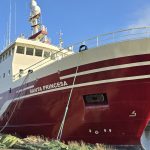Last year nearly 12 commercial fishermen lost their lives in four separate boat accidents off the coast of New Jersey. They were trying to earn a living in the cold and increasingly dangerous Atlantic Ocean. Deadly tides were the main reason for these to be capsized in the deadly water.
In December, two Virginia men died off Ocean County when their 38-foot scallop boat, the Alisha Marie, sank. Last March, the Lady Mary, a North Carolina boat operating out of Cape May, sank on a scallop trip, killing six of the seven crew members. It is informed that New Jersey’s geography dictated that the sea would be profitable in the Garden State, and fishermen with hooks, nets, cages, pots and other contraptions have taken to the oceans and bays to supply the regional demand for centuries.
Greg DiDomenico, executive director of the Garden State Seafood Association, told that with the inclusion of import and exports New Jersey’s seafood industry sees $2 billion in sales annually. He told that most people have no idea at the amount of labor that’s involved in the industry. In addition to the safety hazards, today’s fishermen must navigate government regulations and deal with concerns from scientists, environmental groups and recreational fishermen to fill a seafood platter.
In another incident the Sea Tractor sank in turbulent seas about 20 miles off Cape May, killing the captain, his father and another North Carolina man. The U.S. Coast Guard is often caught in the middle of the regulation and safety issues that affect commercial fishing. Knox said fishermen may have balked at attending Coast Guard safety seminars in the past, but when about 40 captains showed up at a recent seminar on boat stability near Cape May, she realized that the agency’s relationship with fishermen may have evolved.








